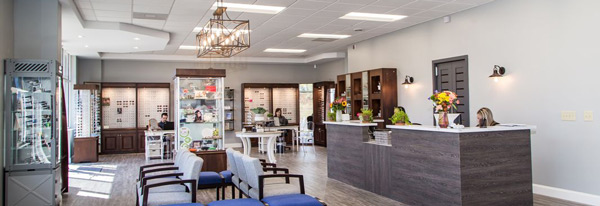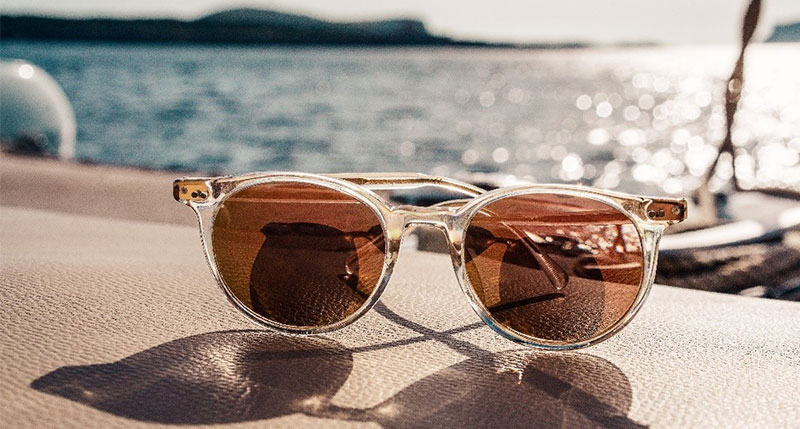June is Cataract Awareness Month, as declared by Prevent Blindness America. There’s a strong correlation between the month of June and cataracts: Cataracts are the top cause of vision loss in America, and the sun’s ultraviolet (UV) rays—which are most intense in summer months—are a contributing factor for cataracts, in addition to other eye conditions including macular degeneration.
How do the sun’s UV rays contribute to cataract formation?
The Earth’s atmospheric ozone layer is gradually disappearing. Think of that layer as a natural umbrella that protects Earth’s surface from the sun’s UV rays. Without that natural layer of protection, more UV rays make it to Earth’s surface and are absorbed by everything on it—including your skin and your eyes.
When your skin absorbs UV rays without sunscreen, the short-term result can be sunburn. Over a longer time, such as after years and years of UV ray absorption, the accumulated damage can cause skin cancer.
Similarly, when your eyes absorb UV rays without protection, the short-term problem can be sunburn of the eyes, called photokeratitis. Long-term, after accumulation of UV light by the eyes over the years, one resulting condition is the formation of cataracts.
How do cataracts form?
The sun’s UV rays can cause free radicals in the human body, which are damaging chemical compounds. Over time, these compounds contribute to health problems, including premature aging such as age spots and wrinkles, skin cancer, and in the eyes, cataracts and macular degeneration.
Years of accumulated UV ray absorption cause the proteins in your eye’s natural lens to thicken and clump together. The normally transparent lens, through which light is focused by the eye, becomes thickened and yellowed by these proteins, preventing light from passing through it clearly. The resulting thickening of your eye’s natural lens is called a cataract.
Cataracts are the leading cause of vision loss around the globe.
Who is at risk for cataracts?
Cataracts are a common problem, typically affecting people over age 40, with one in six of that age group experiencing them. As we continue to age, by the time we reach 70 years old, about 50% of people will experience cataracts.
With at least 24 million Americans affected by cataracts, the condition is a common vision problem. Fortunately, the vision loss caused by cataracts can often be restored through surgery. More than 3 million Americans have cataract surgery each year.
How do sunglasses prevent UV damage to eyes?
Though the sun’s UV rays aren’t the only contributing factor in developing cataracts—lifestyle factors including smoking, diet, vitamin intake and other health conditions, including heart disease and diabetes, also play a role. However, protecting your eyes from the sun’s UV rays is one easily addressed factor.
Increased UV exposure hastens the development of cataracts, so the less UV exposure you get, the better.
The most effective measure you can take to slow or prevent the development of cataracts is to lower your exposure to UV rays by wearing both high-quality sunglasses that block 100% of the sun’s dangerous UV rays and a hat when you’re outside.
What should I look for in a pair of sunglasses?
According to the American Optometric Association, a good quality pair of sunglasses to reduce your eyes’ exposure to the sun’s damaging UV rays should:
- Block out at least 99% but preferably 100% of both the sun’s UV-A and UV-B rays
- Block between 75% and 90% of the sun’s visible light
- Contain lenses that provide distortion-free vision
- Promote proper color recognition with gray-tinted lenses
If you work in an industry where you spend most of your days outside or are an avid athlete who trains outside regularly, consider wrap-around style sunglass frames that provide even more physical protection for your eyes and face from the sun’s harmful UV rays.
To help maintain the health of your eyes over a lifetime, commit to wearing a quality pair of sunglasses every time you spend time outside—both this summer and every day of every year in the future.
Looking for a great pair of sunglasses for yourself or a family member? We’ve got just the right pair for you in our optical department. Give us a call to schedule a time to come in and try some on!


